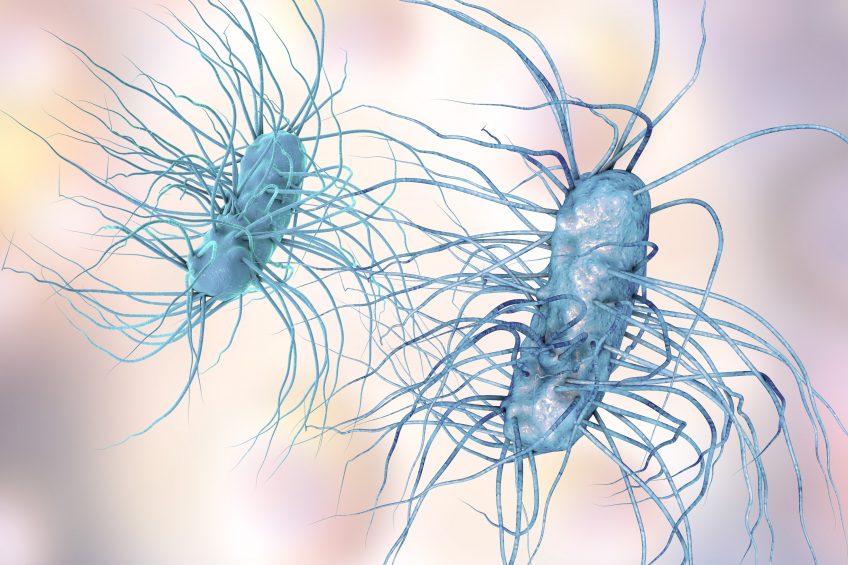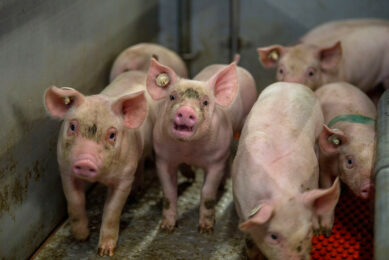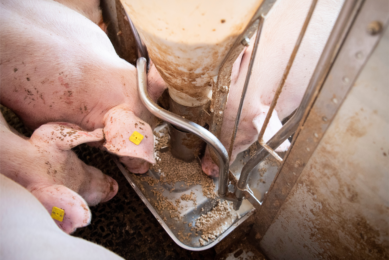A healthy gut = healthy production

Globally, farmers are showing that it is possible to reduce antimicrobial use without sacrificing performance and health. A key focus has been placed on gut health.
Antibiotics have many times been used indiscriminately, to the detriment of healthy animals. If antibiotics are given to an animal with a healthy gut microflora, it is highly likely to result in digestive and microbial disturbances. In-feed prophylactic antibiotics are not used to treat individual sick animals but are used to treat sick and suboptimal production systems.
Therefore, to reduce antibiotic use, the production system needs to be healthy, sustainable, and respectful of animals’ needs. Since prophylactic antibiotics have been used for various digestive tract challenges in animal production, such as necrotic enteritis in poultry, pre-weaning calf diarrhoea and pre- and post-weaning diarrhoea in piglets, a focus on gut health is critical to achieving a sustainable, efficient production without the routine use of antibiotics.
Strong immunity begins at birth
The gut is the largest internal organ and has the most extensive exposed surface within the body. It is a selective barrier with physical, chemical, immunological and microbiological parts, where digested feed and water will be absorbed but disease-causing agents should be kept under control. The gut is also the organ that has the most immune cells, the body’s first line of active defence against pathogens. A healthy gut is therefore not only a disease-free gut; a healthy gut is an effective digestive organ that can mount a good protection against disease and cope with changes and stresses.
The establishment and maintenance of good gut function is vitally important in reducing neonatal morbidity and mortality. There is an immediate demand on the gut after birth/hatching to digest and absorb nutrients efficiently for growth. Neonatal nutrition is a critical component in the establishment of normal gut function, from digestion and absorption to barrier function and development of the immune system. The intestinal epithelium is constantly exposed to commensal and pathogenic microbes and antigens that are important for the development of immunity.
The colostrum feed that the piglet or calf receives during the first 24 hours after birth is the most important meal of the animal’s life as it is vital for the development of the gut. For the newly hatched chick, access to feed is also very important. A hygienic environment and feed are crucial for young animals with underdeveloped immune systems.
Fighting pathogens from the inside out
The presence of disease-causing microorganisms (pathogens) in the gut is not sufficient to cause disease. Trillions of microorganisms inhabit the intestinal tract (collectively, called ‘the gut microflora’), and they form a complex ecosystem that can influence the immune system both inside and outside of the gut and the animal. When this gut microflora is disturbed (dysbiosis), there is a microbial imbalance between the beneficial microflora and potential pathogens, and disease can occur. Dysbiosis therefore makes it easier for pathogens to damage the gut structures and functions. Any dietary change leads to changes in the microflora, so dietary changes should always be gradual to allow the microflora to adapt. Prebiotics, probiotics and mannan-oligosaccharides have been shown to be beneficial for the microflora and gut structures. Coccidiosis, caused by small parasites that replicate in the intestinal cell wall, has traditionally been controlled with antiprotozoal agents called coccidiostats. Most countries are not as concerned about coccidiostat use in animal production as they are about antibiotic use, so hopefully there will be continued access to coccidiostats to protect animals’ gut structure.
Viral pathogens many times pave the way for bacterial pathogens by destroying part of the delicate host-defence in the gut. Good external and internal biosecurity and appropriate vaccination programmes are crucial to producers who aim for prudent antibiotic use.
Mycotoxins cause serious health and productivity problems in all production species worldwide. Intestinal cells are the first cells to be exposed to mycotoxins, often at higher concentrations than other tissues. Deoxynivalenol (DON) is one of the most prevalent toxic cereal contaminants and causes damage even at low levels when present in feed. DON targets epithelial cells, leading to impaired nutrient absorption. DON also disrupts the gut immunity, facilitating the survival and persistence of pathogens and resulting in inflammatory mechanisms that further destroy the intestinal barrier. It is important to assess mycotoxin challenges in any antimicrobial reduction effort.
A well-rounded approach
Alltech supports producers in creating a consistent, healthy, productive animal and making prophylactic and metaphylactic antibiotic use redundant. The Alltech Antibiotic Reduction Programme has a major focus on gut health to gradually reduce in-feed prophylactic and metaphylactic antibiotics. Various feed additives and nutritional solutions are valuable tools for gut health, but these supplements are not necessarily sufficient for a healthy production system. In addition to gut health and nutrition components, the programme includes evaluations of performance, animal welfare, animal health, management, housing, antimicrobial use, biosecurity and cost-effectiveness of production.
This programme is for producers who are interested in achieving higher levels of health and who are committed to taking steps to achieve set goals. The producer, guided and coached by a team of enthusiastic, dedicated and competent expert consultants, including veterinarians and nutritionists, takes on the challenge of helping producers change direction after decades of prophylactic antibiotic use. Audits to establish the baseline situation and to monitor progress are important to keep the momentum going. Systems to benchmark production and set achievable targets are also important, to keep motivation and progress going. Recommendations may include nutritional solutions, management adjustments, antimicrobial use strategies, biosecurity measures and new reproductive performance and productivity goals.
Producers have achieved higher productivity and reduced antibiotic use through the programme, and they find it rewarding to be part of the global action plan to preserve the effectiveness of valuable antibiotics for future generations.






